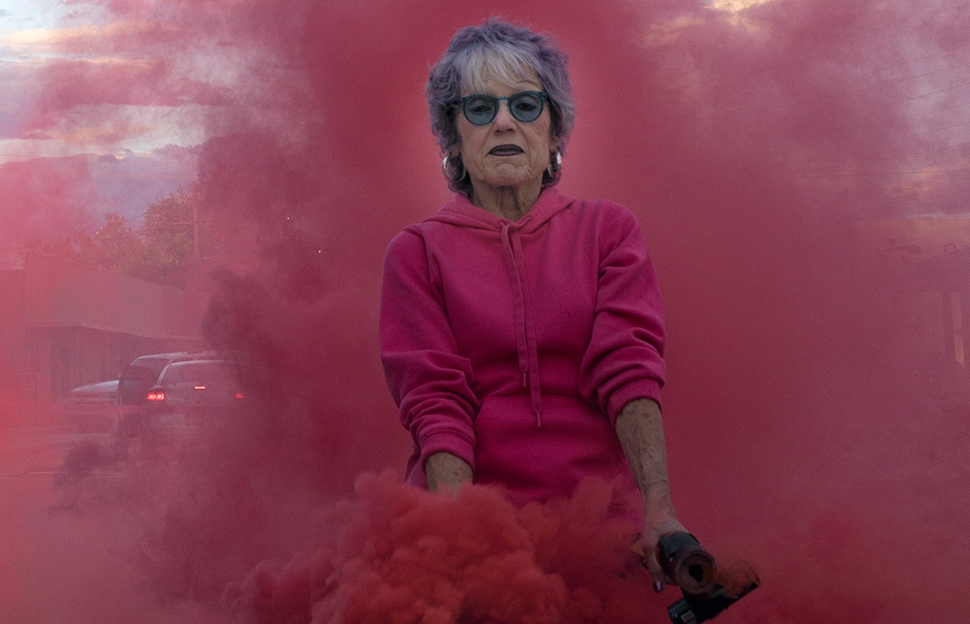Judy Chicago: A Retrospective
"You Should Never Have to Justify Your Work"
Interview by Gwynned Vitello and Portrait by Donald Woodman
“It is hopeless for the occasional visitor to try to keep up with Chicago. She outgrows his prophecies faster than he can make them.” Mark Twain’s pronouncement was about the city, but the She to which he referred could well be Judy Chicago, who chose to adopt the moniker of her birthplace. She is best known for inviting women to The Dinner Party, her paean to hope and history that rocked the art world in the ’70s, and is still serving it up at the Brooklyn Museum. Still a proverbial mover and shaker, she is the Volcano Goddess, an eternal flame, creating art deep from the womb of the earth. Her smoke and fireworks performances are just one example of her multi-atmospheric, multi-dimensional art. Judy Chicago: A Retrospective opens May 9, 2020, at San Francisco’s de Young, where I spoke with Claudia Schmuckli, Curator of Art Programming at the Fine Arts Museums, to get a broader view of the colorful, cat-loving artist.









Portrait by Donald Goodman






